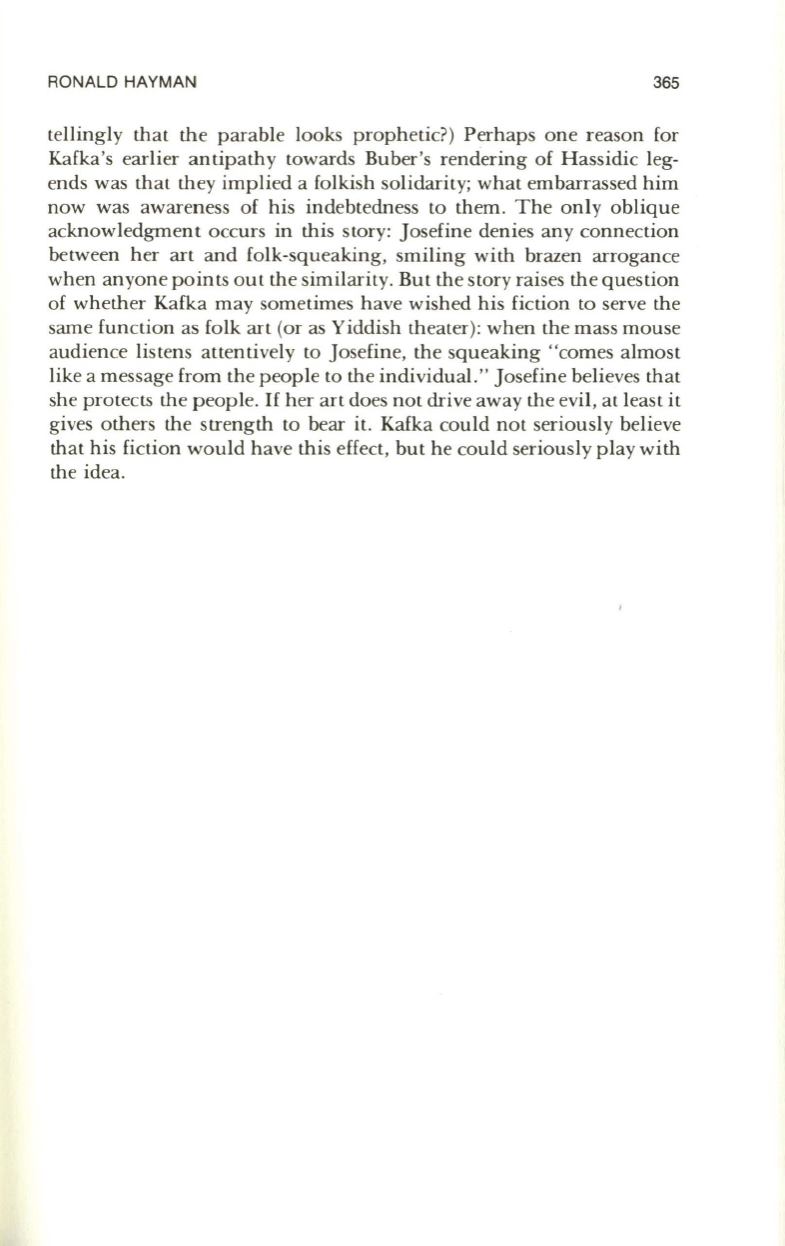
RONALD HAYMAN
365
tellingly that the parable looks prophetic?) Perhaps one reason for
Kafka's earlier antipathy towards Buber's rendering of Hassidic leg–
ends was that they implied a folkish solidarity; what embarrassed him
now was awareness of his indebtedness to them. The only oblique
acknowledgment occurs in this story: Josefine denies any connection
between her art and folk-squeaking, smiling with brazen arrogance
when anyone points out the similarity. But the story raises the question
of whether Kafka may sometimes have wished his fiction to serve the
same function as folk art (or as Yiddish theater): when the mass mouse
audience listens attentively to Josefine, the squeaking "comes almost
like a message from the people to the individual." Josefine believes that
she protects the people.
If
her art does not drive away the evil, at least it
gives others the strength to bear it. Kafka could not seriously believe
that his fiction would have this effect, but he could seriously play with
the idea.


